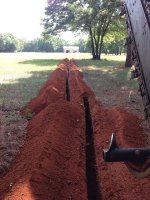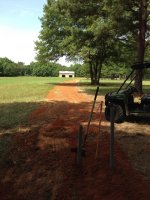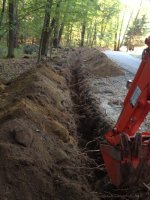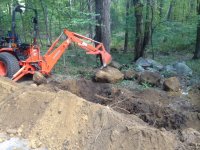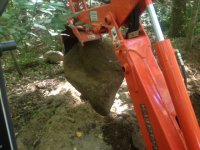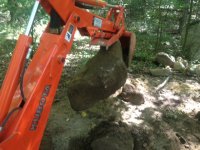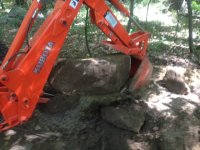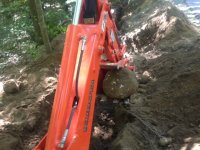Here is the final resting place of yesterday's rock. It's tough to see because it was dark out when I finished (the work lights on the
B2920 work pretty good, the last hour was in darkness). I ended up standing it on it's edge and off to the side so the new trench path will miss it by a small amount. To give some perspective on size the hole it is in is probably 5' deep.
View attachment 338817
While digging this out I did make an interesting discovery. Down about 5' deep the soil changes and is much more sandy clay soil with virtually no rocks. Not sure why, but found it interesting that there is such a dramatic change in soil types. Very easy digging if you can get to it!
I had to fill in all of my holes and that part of the trench to secure the rock and get things back on track. This weekend I will retrench the area next to the rock and continue the last 100' at a depth of either 24" or 18" VS the 30 I had been doing. Hopefully I'm out of the rockiest part now.
